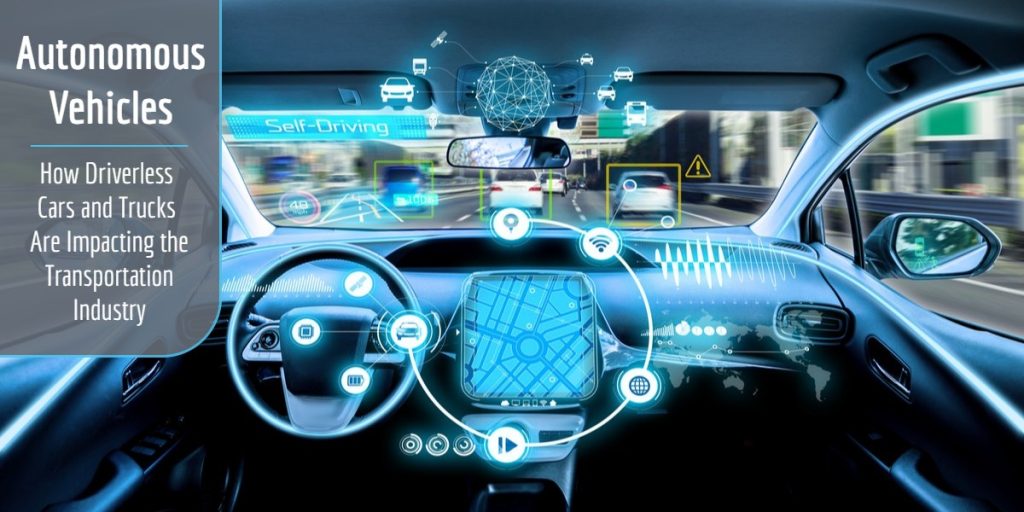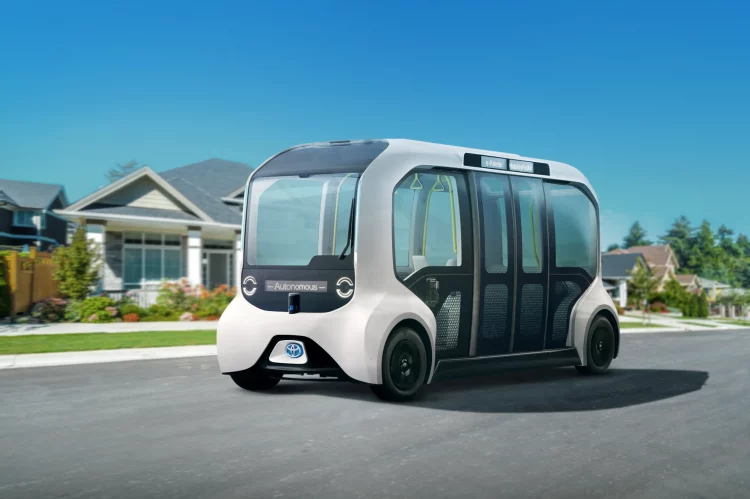Introduction: When Cars Begin to See
Imagine a car that perceives the world as vividly as a human — watching the road ahead, anticipating danger, and making decisions in milliseconds. Autonomous vehicles (AVs) are built around that vision: machines capable of perceiving, understanding, and acting within complex, ever-changing environments.
But this intelligence doesn’t arise magically. Behind every self-driving car lies a network of sensors, algorithms, data systems, and control mechanisms working together in perfect harmony. The key question is not only how cars drive themselves, but how they learn to see, think, and respond safely.
This article dives into the technological heart of autonomy — the sensory systems, artificial intelligence, mapping tools, and computing architectures that turn a simple vehicle into a thinking machine on wheels.
1. The Foundation: Sensing the World
At the core of every self-driving vehicle is its perception system, a technological “sixth sense” that allows it to detect and interpret the world around it.
1.1 Cameras: The Eyes of Vision
- Cameras provide rich color, texture, and depth information.
- They read traffic lights, recognize pedestrians, and interpret lane markings.
- Modern cars use multiple cameras — forward-facing, side-view, and rear — offering a 360-degree visual field.
Tesla’s approach, known as “vision-only autonomy,” relies entirely on deep-learning interpretation of camera images, proving that visual AI can replace expensive sensors if trained extensively.
1.2 Radar: The Sense of Motion
Radar (Radio Detection and Ranging) emits radio waves that bounce off surrounding objects.
It measures distance and velocity precisely, unaffected by fog, rain, or darkness — conditions that challenge cameras.
- Short-range radar detects nearby vehicles.
- Long-range radar identifies fast-moving traffic far ahead.
Radar is key for adaptive cruise control and collision avoidance systems.
1.3 LiDAR: The 3D Map Maker
LiDAR (Light Detection and Ranging) uses laser beams to scan the environment, creating real-time 3D maps called point clouds.
Each LiDAR pulse returns data about object distance, shape, and position — accurate to centimeters.
Waymo and Baidu rely heavily on LiDAR for their safety-critical autonomy. Although costly, LiDAR’s depth precision remains unmatched, helping vehicles distinguish a child from a traffic cone.
1.4 Ultrasonic Sensors and Infrared
Ultrasonic sensors detect nearby obstacles, perfect for parking and low-speed maneuvering.
Infrared systems improve pedestrian recognition at night, especially in luxury autonomous models.
1.5 Sensor Fusion: Seeing with Multiple Eyes
No single sensor is flawless. Cameras struggle with glare; radar lacks detail; LiDAR is expensive.
Sensor fusion integrates all streams into a unified environmental model.
This combination ensures redundancy and robustness — the digital equivalent of human senses working together.
2. The Digital Brain: Artificial Intelligence in Motion
Sensors provide perception, but AI gives understanding.
Artificial intelligence enables autonomous vehicles to interpret complex data, learn from experience, and make decisions dynamically.
2.1 Deep Learning and Neural Networks
At the heart of modern autonomy are deep neural networks (DNNs) — algorithms inspired by the human brain.
Trained on millions of images and scenarios, DNNs can:
- Detect objects (pedestrians, traffic lights, signs)
- Classify road conditions
- Predict movements of vehicles and people
For example, when a pedestrian steps off the curb, the AI predicts trajectory and adjusts speed accordingly.
2.2 Machine Learning Pipelines
Autonomous vehicles constantly learn from vast datasets:
- Supervised learning: Human-labeled driving data teaches recognition patterns.
- Reinforcement learning: Cars learn optimal decisions by trial and error in simulation.
- Transfer learning: Lessons from one driving condition (e.g., sunny roads) apply to another (e.g., rain).
This continuous feedback loop allows AI to adapt and evolve, just like a human driver gaining experience.
2.3 Behavioral Prediction
AI doesn’t just see — it anticipates.
Predictive algorithms forecast how other road users might behave:
- A cyclist weaving between lanes
- A child running after a ball
- A driver changing lanes unexpectedly
Such foresight is crucial for safety and smooth navigation in mixed human-robot environments.
3. Mapping and Localization: Knowing Where You Are
To drive safely, a vehicle must always know its exact position on Earth — not just roughly, but within a few centimeters.
3.1 HD Maps
Unlike traditional navigation maps, high-definition (HD) maps contain detailed lane markings, traffic signs, and 3D building shapes.
They allow vehicles to anticipate curves, intersections, and hazards long before sensors detect them.
3.2 Simultaneous Localization and Mapping (SLAM)
SLAM algorithms help vehicles create and update maps in real time.
Using LiDAR or camera data, the car builds a local 3D model while pinpointing its position within it — even in unmapped areas.
3.3 GPS and IMU Integration
Global Positioning Systems (GPS) provide geographic coordinates, while Inertial Measurement Units (IMU) track acceleration and rotation.
Combining GPS + IMU ensures accurate positioning even when satellite signals drop, like in tunnels or dense cities.
4. Decision-Making: Thinking on the Move
Once perception and localization are complete, the car must decide what to do next — a process known as path planning.
4.1 Perception → Prediction → Planning
- Perception: Identify environment and actors.
- Prediction: Forecast others’ future positions.
- Planning: Choose optimal trajectory avoiding collisions.
This is the car’s “thinking loop,” executed dozens of times per second.
4.2 Motion Planning Algorithms
Algorithms such as A*, Dijkstra’s, and RRT (Rapidly-exploring Random Trees) calculate the best path under constraints — road geometry, rules, and safety margins.
4.3 Control Systems
Once a path is chosen, low-level control modules handle steering, braking, and acceleration.
These systems rely on PID controllers and model predictive control (MPC) for precision and stability.
4.4 Human-Like Smoothness
Modern AVs aim not only for safety but also comfort — mimicking human-like driving patterns: smooth turns, gentle braking, and natural lane changes.

5. Computing Power: The Vehicle as a Supercomputer
Processing sensor data in real time demands immense computing power.
5.1 Edge Computing
Onboard GPUs and CPUs process sensor input instantly. NVIDIA’s Drive platform, for example, performs trillions of operations per second to analyze road scenes.
5.2 Cloud Computing
While edge systems handle immediate reactions, cloud infrastructure manages large-scale learning — aggregating data from fleets worldwide to refine algorithms.
5.3 Redundancy and Safety
Autonomous vehicles use fail-safe architectures:
- Dual processors
- Independent power systems
- Real-time diagnostics
This ensures that even if one component fails, the system continues safely — a principle known as “functional safety” (ISO 26262 standard).
6. Communication and Connectivity
Autonomy thrives on connection.
6.1 Vehicle-to-Everything (V2X)
Cars communicate with:
- Other vehicles (V2V): share position, speed, and hazards
- Infrastructure (V2I): traffic lights, road signs, parking systems
- Pedestrians (V2P): smartphones alert nearby drivers
This connected ecosystem reduces blind spots and enables cooperative driving.
6.2 5G and Edge Networks
Ultra-low latency communication (<10 ms) from 5G allows vehicles to exchange real-time data, crucial for split-second decision-making in dense traffic.
6.3 Cybersecurity
Connectivity introduces new vulnerabilities.
To protect against hacking, systems use encryption, intrusion detection, and secure over-the-air (OTA) updates.
7. Testing and Simulation: The Virtual Road
7.1 Real-World Testing
Companies like Waymo and Cruise test millions of autonomous miles in cities worldwide.
These tests expose vehicles to unpredictable conditions — construction zones, aggressive drivers, sudden weather shifts.
7.2 Virtual Simulation
Physical testing alone isn’t enough.
Simulators recreate billions of scenarios — everything from foggy nights to jaywalking pedestrians — enabling safe, large-scale training.
7.3 Digital Twins
Entire cities can be replicated digitally.
In these digital twin environments, cars interact with virtual traffic to test responses under every conceivable condition.
8. The Human Element: Interfaces and Experience
8.1 Human-Machine Interaction (HMI)
AVs must communicate intentions clearly:
- Visual cues (lights, signals)
- Auditory alerts
- Dashboard notifications
A self-driving car that “makes eye contact” with pedestrians builds trust.
8.2 Transition of Control
In Level 3 systems, humans may need to retake control.
Smooth handover mechanisms ensure safety — alerting drivers with visual and tactile signals.
8.3 Passenger Experience
Future AVs will reimagine car interiors: rotating seats, entertainment displays, and productivity hubs.
The cabin becomes less a driver’s cockpit, more a living space in motion.
9. Future Frontiers
9.1 End-to-End Learning
Instead of separate perception and planning modules, new AI models process raw sensor input directly into driving actions — simplifying design and boosting adaptability.
9.2 Neuromorphic Computing
Inspired by the human brain, neuromorphic chips consume less power and process sensory data in parallel — ideal for edge-based intelligence.
9.3 Swarm Intelligence
Vehicles will operate like cooperative swarms, coordinating through V2X for smoother traffic flow and real-time rerouting.
9.4 Energy Synergy
Autonomous vehicles will pair with electric powertrains and smart grids, optimizing routes for charging and renewable energy usage.
10. Challenges and Open Questions
- Cost: LiDAR and computing units remain expensive.
- Edge Cases: Extreme weather, unpredictable human behavior.
- Data Privacy: Continuous sensing raises surveillance concerns.
- Regulation: Global standards still evolving.
- Ethics: Decision-making in unavoidable accidents.
Technological progress must align with societal acceptance and clear ethical frameworks.
Conclusion: Teaching Machines to See
Autonomous vehicles represent one of humanity’s most ambitious engineering challenges: giving machines the perception, judgment, and intuition of a human driver.
Their “eyes” — cameras, radar, LiDAR — provide the sensory foundation. Their “brains” — powered by AI and high-performance computing — interpret and act. And their “nervous systems” — connectivity, maps, and control — ensure coordination and safety.
As these systems converge, the line between car and computer continues to blur. Each mile driven, real or simulated, teaches machines to see the world with greater clarity and confidence.
The road to autonomy is not about replacing human intelligence — it’s about extending it. Through precision, patience, and data-driven insight, the vehicles of tomorrow will navigate not just roads, but the very relationship between humans, technology, and trust.











































